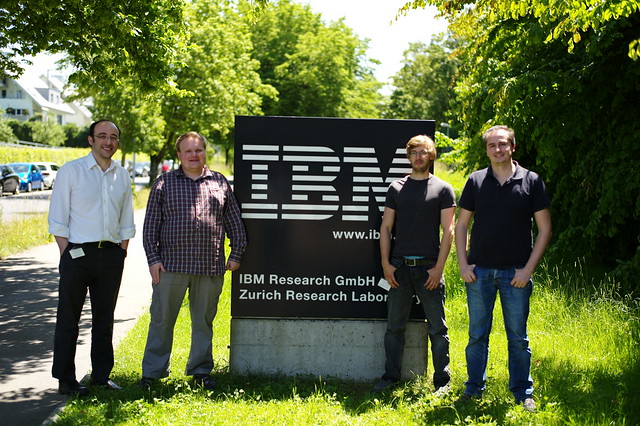
Pavel Klavik,IBM and Charles University in Prague;
Yves Ineichen, IBM and Cristiano Malossi, IBM
 |
| From left to right: HPC scientists Costas Bekas, IBM; Pavel Klavik,IBM and Charles University in Prague; Yves Ineichen, IBM and Cristiano Malossi, IBM |
Labels: bluegene, HPC, IBM Research - Zurich, supercomputer